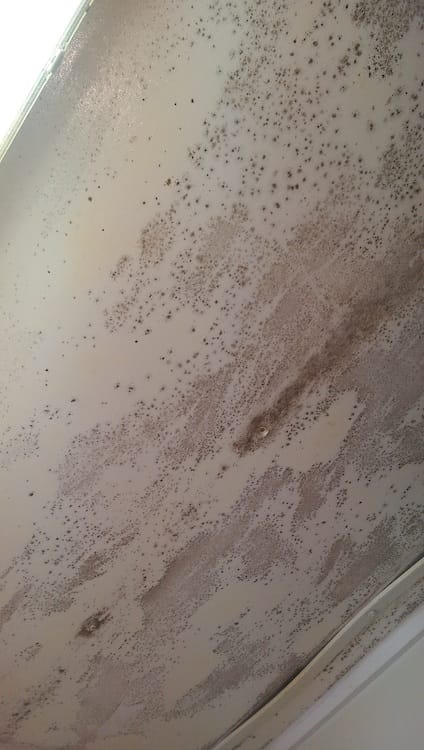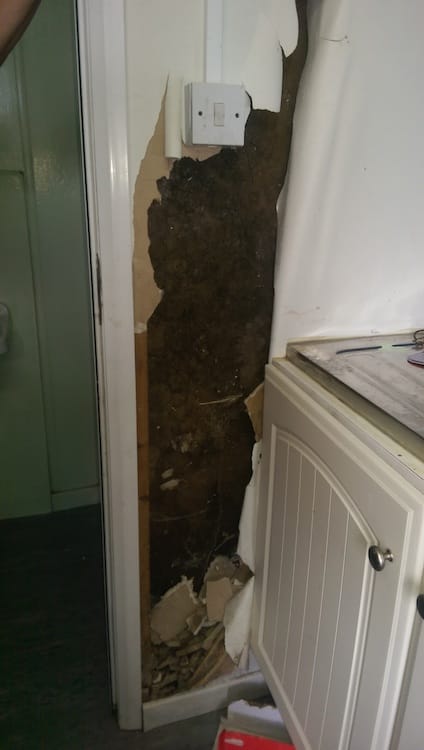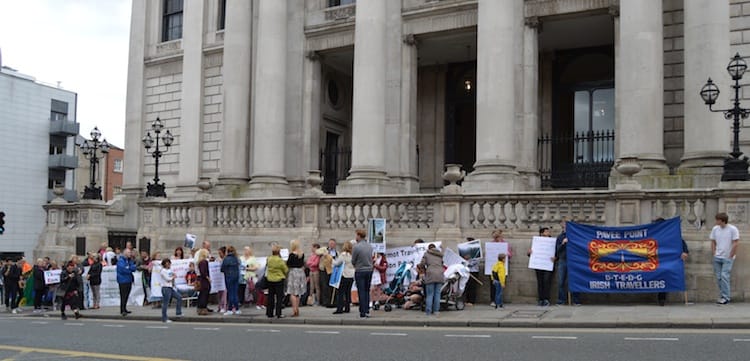What would become of the Civic Offices on Wood Quay if the council relocates?
After The Currency reported the idea of the council moving its HQ, councillors were talking about and thinking through the pros and cons and implications.
Dublin City Council has spent €500,000-plus renting crumbling sanitary units for Traveller halting sites. Who’s to blame for the condition of the units?

The walls are crumbling like chalk. Mildew masks the ceiling. Exposed wires hang loosely. And these hazardous sanitary units are the biggest successes of the Traveller Accommodation Programme at Labre Park.
When these units were first built in 2011, it was like winning the lottery for many of the families who had been without water and electrical facilities for years.
But it soon became clear that the units – which each contain a toilet, shower and washing machine – weren’t all that. Instead, they were a health-and-safety hazard.
Shelves and mirrors that were nailed up quickly collapsed as the thin plasterboard walls were too weak to hold them. When winter arrived, the units grew too damp for the tiny heater fans to make any difference; mildew, mould and other unidentified growths appeared in many of the units.
More recently, the exposed electricity wires set fire to some units.
Dublin City Council has spent more than €500,000 renting these crumbling units for halting sites. They could have bought the units by now for that money, says Sinn Féin Councillor Daithí Doolan.
It costs between €421 and €500 per month to rent each unit. Since 2011, 23 have been rented – 13 in Labre Park – and another eight were added in 2014. (The last bunch appear to be in good condition).
“Nobody told me we were getting the worst value for money I’ve ever seen in my life,” said People Before Profit Councillor Bríd Smith at a recent council meeting. She’d earlier fought for the units to be installed.
Doolan has also been critical. “To pay this money for sanitary units that are not fit for use is ridiculous and unacceptable,” he said. “It is an insult to local residents and the public who have to pay for the rental.”
It’s unclear, though, who is at fault for the condition of the units.
The council rents the units at Labre Park from a company called Allspace, but a coalition of traveller’s groups, including the Ballyfermot Traveller Action Project, say that maintenance isn’t included in this rental contract. So perhaps it is Dublin City Council that should be keeping the units in decent condition.
Whoever is responsible hasn’t been doing enough.

As she takes a puff from her inhaler, Ann Hanifin of Labre Park says she had to stop using her sanitary unit, after her doctor told her to avoid the mildew. She and her daughter both have bad chests.
She scraped the mildew from the bathroom ceiling up until recently, but feels she is getting too old to do it any more. She was told these units would be temporary, but it’s been four years now. She would be happy if they were insulated.
The Travellers here at Labre Park requested that the units be made of bricks, but Dublin City Council provided temporary units, designed for construction sites, for the “short-term” before the site was redeveloped and houses were built .
Labre Park – named after the patron saint of Travellers, St Benedict Joseph Labre – was the first site built specifically for Travellers by a local authority in Ireland. After opening in 1967, it quickly filled up and the descendants of some of the families that moved in at that time are still there today.
The redevelopment of Labre Park has been promised since 1999. According to the most recent Traveller Accommodation Programme, 24 families here are in need of homes.
Last week, a sizable group of representatives from the Travelling community gathered outside City Hall to protest against the conditions of sanitary units, and cuts to this year’s budget for Traveller accommodation.
The current programme for 2014-2018 promised to deliver homes for 120 Traveller families. But works have been moving extremely slowly.
Last month, Travellers were dealt another blow when Dublin City Council’s 2015 budget allocation for Traveller accommodation was slashed from €4.5 million to €366,299.
Last week, Bríd Smith, who is chair of the Local Traveller Accommodation Consultative Committee, asked for a meeting with Minister for the Environment, Community and Local Government Alan Kelly to discuss this cut. Her request is apparently still being considered.
The effects of the cuts are immediate. The money that has been allocated will only cover works that have already been done – electrics and day houses in at St Margaret’s halting site – and a further bay and some extensions.
Plans to start work on houses in Kylemore Grove, adjacent to Labre Park, have only received half of the funding needed and will be delayed unless another source of revenue is found.

Jerry Devine says he isn’t surprised. He’s been waiting on a house for his family for years now. “They’ve promised the moon and stars for God knows how long. We’re sick of going to meetings and protests,” he says.
His two young children share a bed with his wife and his toddler son is constantly in the hospital due to his asthma. His family have also been using a rundown sanitary unit, which has had problems with rats as well as everything else. The plasterboard collapsed when his four-year-old daughter leaned on it, he says.
He isn’t too optimistic about the promises for the redevelopment of Labre Park to be completed by 2018. At this stage, he and his wife would be happy to move to normal social housing.
For the last Traveller Accommodation Programme, 118 units of accommodation – meaning houses and bays – were promised, but only one was built.
In 2013, it emerged that Dublin City Council had failed to draw down funding from the Department of the Environment with an under-spend of €12 million. The estimated cost of redeveloping Labre Park is just over €5 million.
A spokesperson for the Irish Traveller Movement puts this failure to act down to a lack of political will.
Smith uses stronger words: “I believe there is a hidden, unofficial racism in Irish society, particularly in the current government.”
Angela O’Neill of the Finglas Traveller Development Group says: “I don’t know how you could put the money back in the coffers when there is such dire needs.”
She is unsure if the failure of the council to act on Travellers’ needs for accommodation comes down to institutional racism, but she does believe council staff need to be trained in cultural awareness. This was a suggestion submitted to the council’s Local Economic and Community Plan last month.
Smith claims that funding to other Traveller services has been cut by 80 percent across the board. This is true in the case of education programmes.
Ann Hanifin misses some of these programmes, in which she could learn to sew, and make crochets, flowers and candles. She also misses the opportunities to get out and chat with people.
“They’re all gone . . . they just stopped everything for the Travelling community. If it was any good for Travellers, its gone,” she says. She puts this down to discrimination. “It seems to be just Travellers, isn’t it?”

Cuts and broken promises can make O’Neill’s work on the ground very difficult. “They basically give up,” she says. “You can understand why there’s such problems in their community, living in conditions like that would drive you to drink or drugs.”
Overcrowding is a particularly bad problem in Labre Park, she says. One illustration of the lack of council investment is the fact that it uses containers, instead of building walls to enclose the end of the site.
O’Neill also points out that Travellers are means-tested and pay money to Dublin City Council, even if they are based on an unauthorised site. “Landlords have obligations,” she adds. “They pay rent based on their income, the same as you’d pay for a flat.”
Building homes for Travellers through not-for-profit housing associations like Clúid could be the way forward, O’Neill says.
Clúid have been working with Dublin City Council and Ballyfermot Traveller Action Project to plan 24 houses and the redevelopment of Labre Park. It is waiting for approval for the project, said a spokesman for Clúid.
O’Neill is sceptical of the contract for sanitary units between Dublin City Council and Allspace. “There’s no logic behind it,” she says. “Who agreed the maintenance?”
Since the issue came to light in Dublin City Council, contractors have now been instructed to refurbish the units, but since work began at the end of June, just one sanitary unit has been upgraded.
Now, Travelling groups have asked Dublin city’s housing committee to conduct a full review of the tendering process and awarding of the contract for these units. They want to know exactly how the contract was agreed.
Allspace could not be reached for comment.